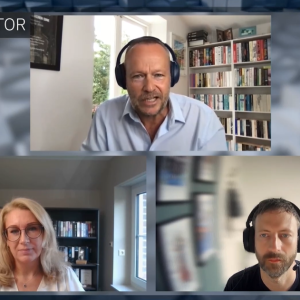Criticisms beginning to emerge set the stage for what could prove
to be a lively debate at the Internet Corp for Assigned Names and Numbers’ (ICANN) quarterly policymaking meeting in Mar Del Plata,
Argentina, which kicks off this weekend.
VeriSign, which has been running .net for seven years, emerged this week from an independent evaluation of five bidders as the best choice to manage the .net registry. ICANN is now talking to the company about a new contract.
But some of the bidders who were not selected have started to
publicly and privately criticize the evaluation, which was conducted
by Telcordia Technologies, saying the evaluators got some
basic facts wrong.
One senior member of ICANN’s Generic Names Supporting Organization
is calling on ICANN to delay negotiations with VeriSign, saying
the evaluators failed to adequately consider increasing competition
when making their decision.
Denic eG, the German non-profit that runs .de, said yesterday it
is baffled that it was placed fourth in Telcordia’s ranking
of the five .net contenders, adding that the evaluation was sloppy
and got at least one crucial fact wrong.
One of the key shortcomings held against Denic in the report
is that it allegedly uses home-made database software, whereas it actually uses a commercial product from one of the world’s foremost suppliers – a point made expressly in the application, Denic said.
Telcordia’s panel assessed each candidate against many criteria, giving a color code to each applicant on each criterion. Red meant unacceptable, yellow meant serious flaws, green was acceptable and blue was given to bids that exceeded requirements.
Denic scored all green or blue, except for its database capabilities, where it scored yellow because it is using a database built in-house
which exposes it to risks such as loss of critical personnel that can adequately design, maintain and enhance their database.
But Denic uses Sybase Adaptive Server Enterprise, a commercial database management system, and says so a few times in its application.
So the finding that Denic cannot take advantage of industry advances
in commercial software is questionable.
Denic director Sabine Dolderer said: It is not now our intention
to descend to the level of petty nit-picking, but there is no escaping the impression that the evaluation report was drawn up under great pressure of time, and it was its quality that suffered.
If Denic got a blue instead of a yellow for that criterion, it
would have ranked third instead of fourth, but it still would have ranked well below VeriSign and second-placed American-Japanese joint venture Sentan Registry Services.
The Telcordia panel acknowledged in its report that VeriSign
has a small numerical edge over Sentan that is not statistically significant given the methodology used to rate the RFP [request for proposals] responses.
In the color scheme, VeriSign scored 14 blues versus Sentan’s 12 on high priority criteria. Sentan also got one medium priority
criteria blue, apparently on the basis of its language support.
Neither firm had any reds or yellows.
Sentan is a joint venture of NeuLevel (itself a venture of
NeuStar and Melbourne IT) and Japan Registry Services. Together, they run the domains .biz, .us and .jp. VeriSign also runs .com and .tv, among others.
While Sentan is not saying much more than it is not happy with
the outcome of the evaluation, a reading of the report suggests
that the company could be able to raise some concerns about how comparisons between it and VeriSign were made.
For example, VeriSign beats Sentan (blue beats green) on its disaster
recovery practices. The reason given in the report is: [Sentan’s]
Approach to geographic diversity slightly risky due to proximity
of primary and backup sites.
Sentan, according to its application, has one data center in Virginia,
and one in North Carolina, a few hundred miles apart, and a backup in Japan. VeriSign, on the other hand, lists two sites, about 10 miles apart in Ashburn and Dulles, Virginia.
It’s possible that VeriSign was ranked higher than Sentan for
other reasons too, but the report does not say that. If lack of
geographic diversity would be enough to reduce VeriSign’s rank,
the overall difference between the two firms narrows further.
A member of ICANN’s GNSO Council is also calling into question
the evaluation’s apparent bias towards technical relative criteria.
According to Philip Sheppard, increasing competition in the market should have been given more weight than it was.
The GNSO prepared a report for ICANN last year suggesting criteria
to be used to pick the next .net registry. Much of it was used
in the final RFP. According to Mr Sheppard, the GNSO report stated that competition is the number one relative criteria.
The evaluation was biased towards multiple technical criteria even though the central message of the GNSO report was that competition
was the most important factor once technical/financial/security criteria were of a satisfactory standard, Mr Sheppard wrote in an
email to the GNSO Council yesterday.
Mr Sheppard suggested the Council propose next week to delay any negotiation with any vendor until a comparison of the evaluator’s report with the GNSO report can be made in particular with respect to the ICANN core value of promoting competition.
The GNSO is part of ICANN’s policy-making processes, but its decisions
are not binding. It’s arguable that neither the GNSO report on
.net selection criteria nor the RFP specifies that the evaluators
were supposed to weight competition more heavily.
An ICANN spokesperson pointed out that VeriSign will reduce its fees from $6 to $4.25 per name per year, as a result of the competitive application process. Savings may be passed on to consumers. Competition elements were built into the RFP, he said.
The industry agrees that a stable .net registry is important because it underpins many vital internet infrastructure services. For the bidders, it is a highly prestigious deal that could lead to additional contracts in future.






